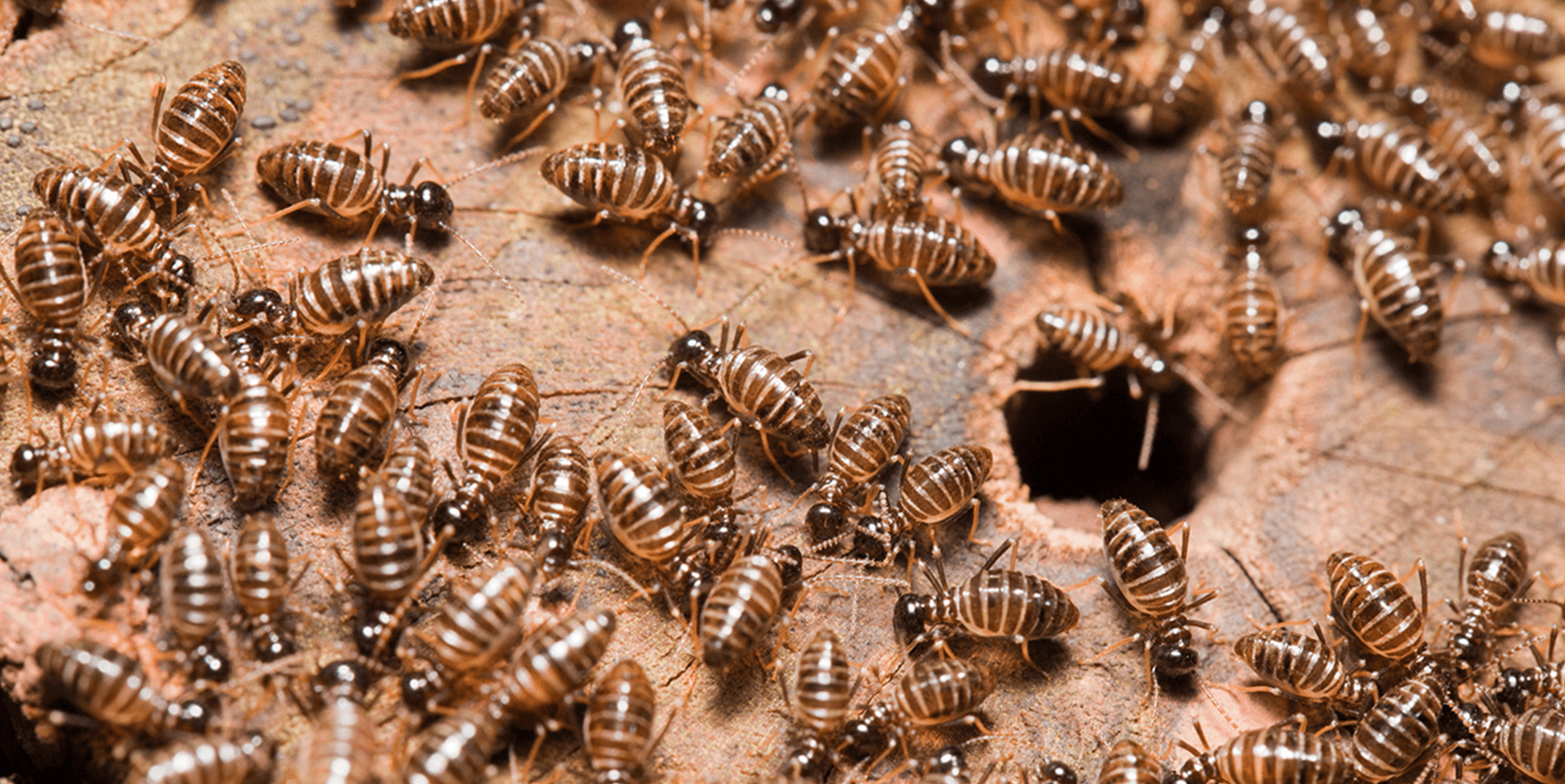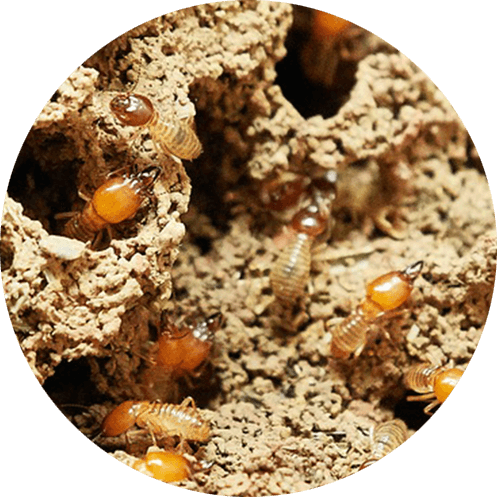
The biggest threats to a property often come in the smallest forms. Topping the pest list, termites alone cause upwards of $700 million of damage to Australian homes each year. Likewise, rodents, possums and similar uninvited guests can cause significant damage – and more than their fair share of distress and expense for homeowners.
When purchasing a property, all of this becomes especially relevant as does the stark legal warning, “Buyer, Beware!”.
To make the right decisions, you need a full and frank appraisal of potential pest problems, both inside the building and in its wider environment. This should tell you what you are faced with and what it means for your property. It means being able to negotiate your purchase based on the full facts – and to get the right deal.
Here’s the bad news for Adelaide homeowners: in South Australia, the threat of termite infestation is amongst the highest in the country. But here’s the much better news: if your property is affected, if you are armed with an expert independent pest inspection report from Adelaide Hills Building Inspections you have all the knowledge you need to respond in the right way.
Timber Pest Inspections: Don’t buy more than you bargained for…
During a Timber Pest Inspection, the surveyor will look for evidence of damage caused by termites, other types of borers, and fungal decay. The surveyor will also identify factors which may make the property more susceptible to timber pests. Examples of this include timbers with direct ground contact and timbers affected by exposure to moisture caused by leaking pipes and air-con unit discharge.


Termites: the number one timber pest
Here’s why the threat of termite damage deserves your special attention:
- Cost. Once an infestation takes hold, dealing with the consequences can be very expensive. The Australian Environmental Pest Managers Association estimates the average cost of treatment and damage repair at $10,000. This cost is not covered by most home insurance policies.
- The impact on property value. When surveyed, three-quarters of prospective home buyers said they would not consider a property with termites. The same survey showed that an infestation could reduce a property’s value by a whopping 25%.
- A problem on the increase. A 2003 study estimated that 650,000 Australian homes had been impacted by termite infestation over the preceding five years. It is now estimated that almost one in three homes have termites present.
- It affects properties old and new. The risk to older homes has increased over time since the banning of organochlorine timber treatments. As the residual effectiveness of those legacy treatments fade, timber becomes more vulnerable. For homes built since the 1960s, there is a higher risk of infestation due to the use of concrete slabs with little or no ground clearance – along with the use of untreated softwood for framing.

What you need to know:
For homeowners
Catch a problem early and it becomes much easier – and cheaper – to fix. Even where a property has inbuilt termite protection barriers in place, the integrity of those barriers and of the property itself should still be checked regularly. If a serious termite risk is caught early, homeowners can take control steps necessary to avert serious structural damage.
For home buyers
Your house purchase is likely to be the biggest single financial commitment you will ever make. Here’s why a timber pest inspection should be an integral part of your due diligence checks:
- Arming you with the full facts for negotiation purposes. If you are in the Pre-offer stage or in a situation where an offer is subject to the results of an inspection report, if that inspection reveals an issue you have the option of renegotiating based on the findings. This gives you clarity on property value and fairer purchasing power.
- Assessing the true costs of pest risk management. Is the property in need of remedial treatment? Are there ‘pest-friendly’ cracks and leaks that need to be fixed? Armed with an inspection report, you can assess the cost of what needs to be done, request that works must be carried out pre-purchase, and/or tailor your offer accordingly.
- Letting you know when you should walk away. With an independent report from an Adelaide Hills fully qualified timber pest expert, you always get the full picture. If the severity of the problem means that the purchase isn’t ‘worth it’, it’s far better to find this out now than later and continue searching for less risky properties.
Access all Areas: Here’s What a Pest and Buildings Inspection Covers
At Adelaide Hills Building Inspections, our goal is simple: to ensure that no pest issue goes undetected. This includes evidence of current pest activity such as termite damage to timber, as well as factors that expose the property to the risk of future infestations.
During the inspection, our expert surveyors carry out a thorough examination of the property and its immediate surroundings. This includes the following:
- INTERIORS: Walls, floorboards, skirting boards, door and window frames.
- EXTERIORS: Walls, door and window frames, decking, verandas and all outdoor living areas
- SUBSPACES: Foundations and stumps, joists, bearers and floorboards
- ROOFS: Internal roof framing and top wall plates, exterior barges and fascia.
BEYOND THE PROPERTY: To ensure full coverage, our surveyors will examine the entire area within 30m of the main property. This includes (but is not limited to) inspection of retaining walls, adjoining or partially attached structures (e.g. garages and carports) detached structures (e.g. sheds, stabling and fencing) and tree stumps.
Termites in Adelaide: What Are You Up Against?
When it comes to risks to property, termites are public enemy number one; responsible for more damage to Australian homes in an average year than fire, floods and storms combined.
The prevalence of termites in South Australia is ranked high – and this includes a high incidence of infestation in the State’s urban and suburban areas. The message is clear: if you live in and around Adelaide, this is a threat you need to stay on top of.
Termites: a closer look...
Similar in size and appearance to ants, termites are in fact more closely related to cockroaches. They live in well-ordered colonies (either subterranean or above ground) and obtain their moisture from soil and their nutrients from timber – hence their inclination to hone in on wooden-framed homes.
Operating from their central nest, termites construct underground tunnels from which they can radiate for up to 100m in search of timber food sources.
Shunning open ground, termites will seek to enter a building via concealed points, including cracks in concrete slabs and walls and through in-fill patios. It’s one of the reasons why expert input is a must for assessing the risk to specific properties: for the layman, this pest’s preferred access points are very easy to miss.
Early detection gives you the opportunity to take swift remedial methods, including bait deployment, colony removal and blocking means of access.
Fail to address the problem and it can take as little as three months for termites to eat through a home’s timbers.
Different species of termite give rise to different levels of risk – as some are more inclined than others to target dry, seasoned timbers, whereas others are more of a risk to exterior wood (especially when it’s wet). If a termite issue is identified, your pest inspection report from Adelaide Hills Building Inspections will always include identification of the termite species detected along with species-specific recommendations.
Here are the termite species that are particularly prevalent in South Australia:
Coptotermes acinaciformis
- The most destructive termite species in Australia, responsible for an estimated 70% of termite damage.
- Prevalent throughout South Australia.
- Commonly found in urban areas and where eucalypt gum trees are present.
- Secretive in nature, Coptotermes acinaciformis builds its nests in the base of trees or underground (including under patios and concrete).
- Will sometimes build satellite nests as a subsidiary to its main colony (again, including under buildings).
Coptotermes frenchi
- Common in Adelaide and south eastern South Australia.
- Fond of devouring the type of softwood timber framing common in urban areas.
- Has the capability to strip an entire timber, leaving just its veneer.
Nasutitermes exitiosus
- Commonly found in South Australia.
- Builds a mound nest (making it relatively easy to liquidate).
- Can be highly destructive to property timbers if a colony is not dealt with.
Heterotermes ferox
- Commonly found in South Australia.
- Typically builds nests next to stumps and decaying logs
- Will typically attack fences and other wooden structures prone to wood decay.
Inspections for Other Pests
Termites are not the only pests that can damage your home and lead to value depreciation. A thorough inspection report will highlight all pest issues, including the following:
- Cockroaches. More than just a nuisance, cockroaches have been linked to childhood asthma and other diseases. Correct identification of a cockroach presence is the first step to eradication.
- Rodents. As well as the obvious hygiene risk, don’t overlook the structural damage rats and mice can cause – to the home, contents and outside areas.
- Spiders, wasps, borers and many more: if there’s an infestation present, our surveyors give you the full lowdown.
Pricing
Pest Inspections Reports from $160
Receive your report within 24 hours
Options to receive your report as part of a full pre-purchase inspection
Reassurance is priceless: get the full ‘pest picture’ to avoid nasty post-purchase surprises
